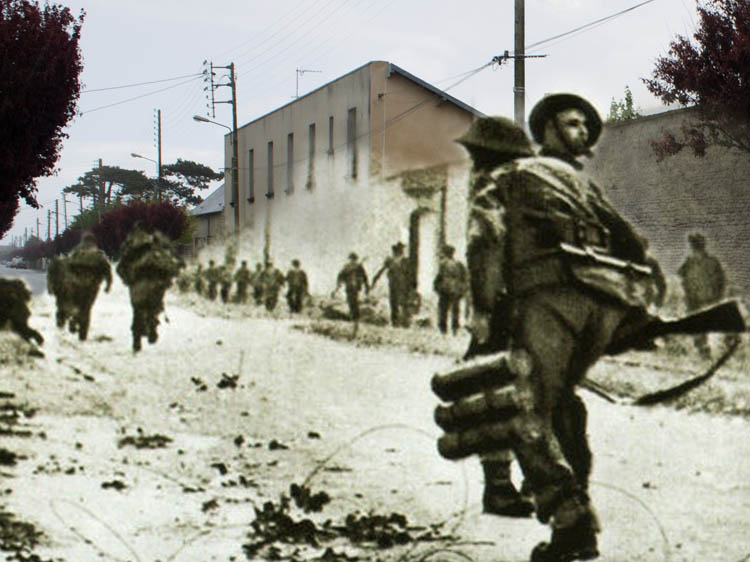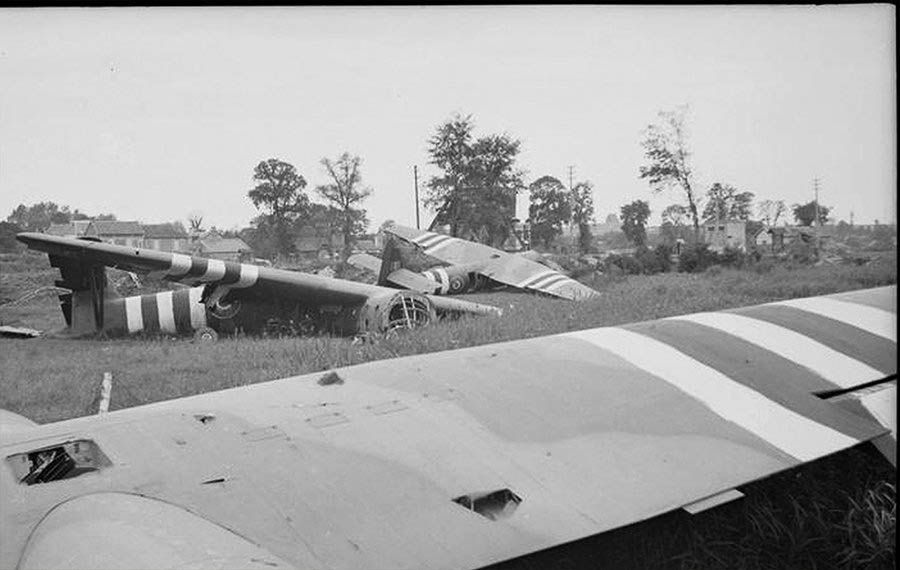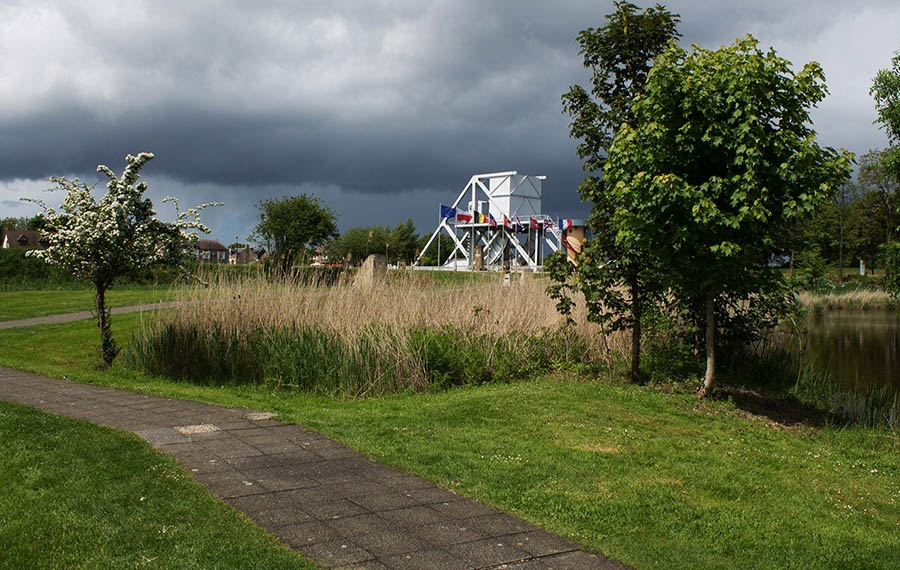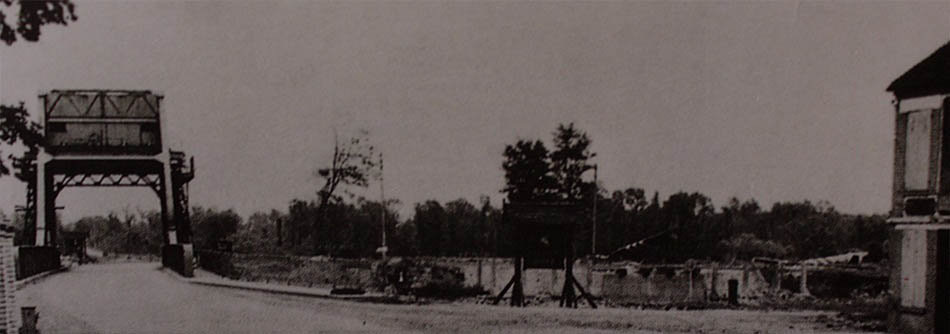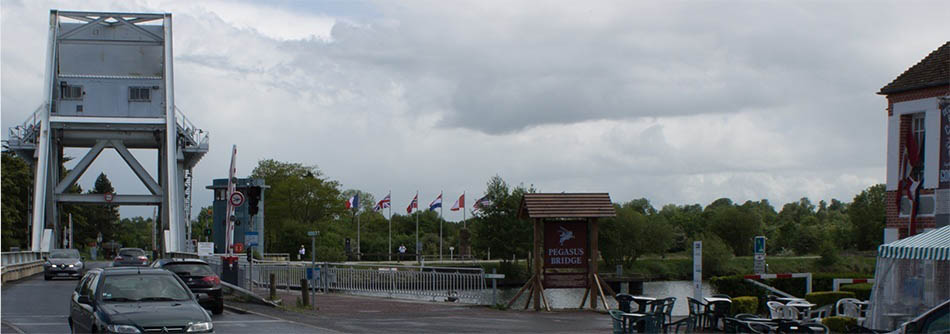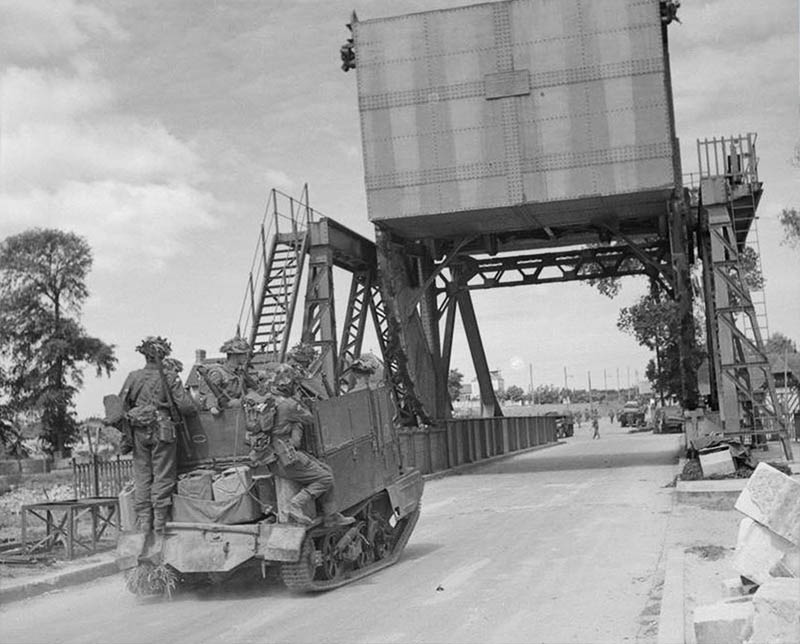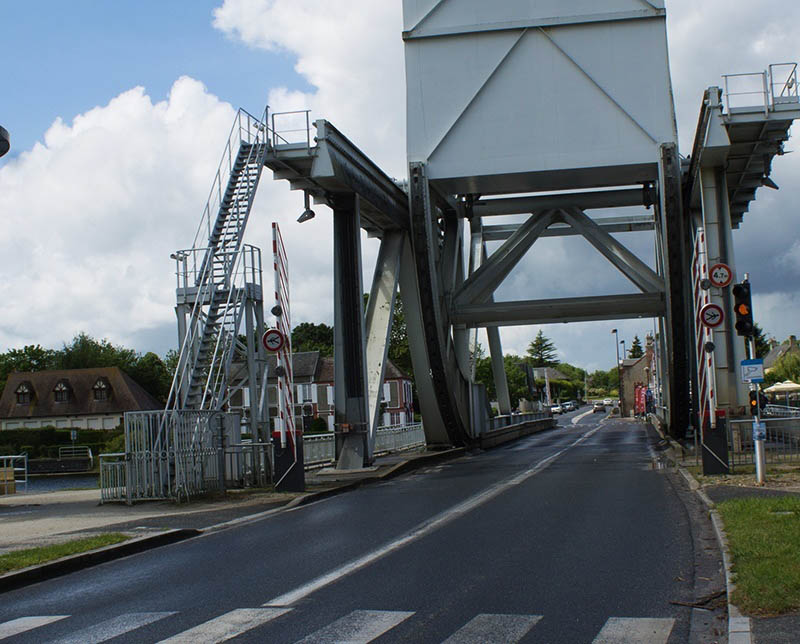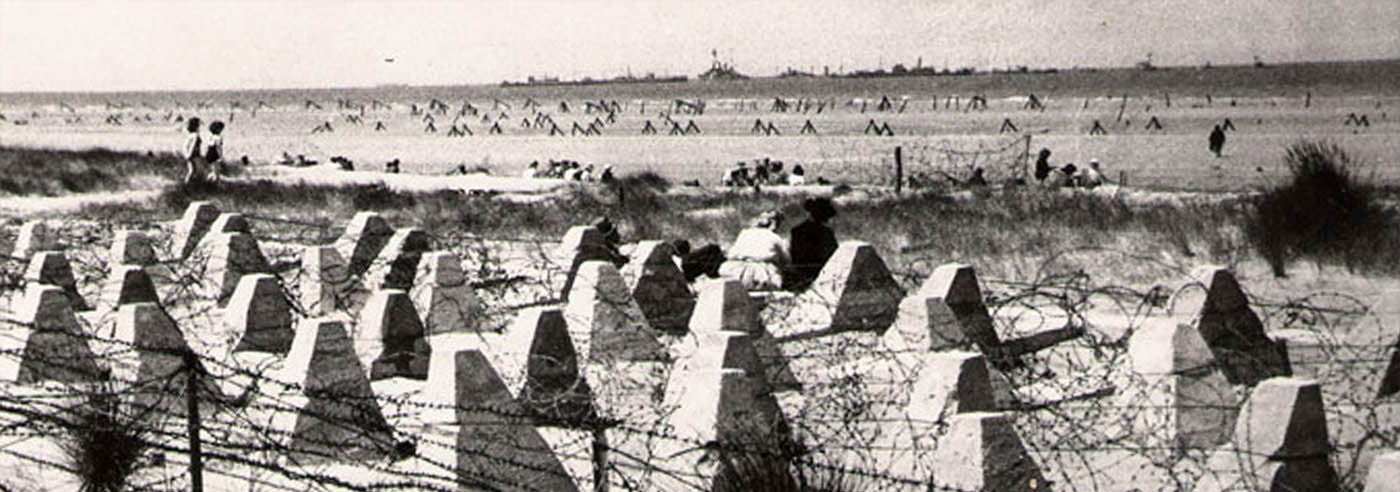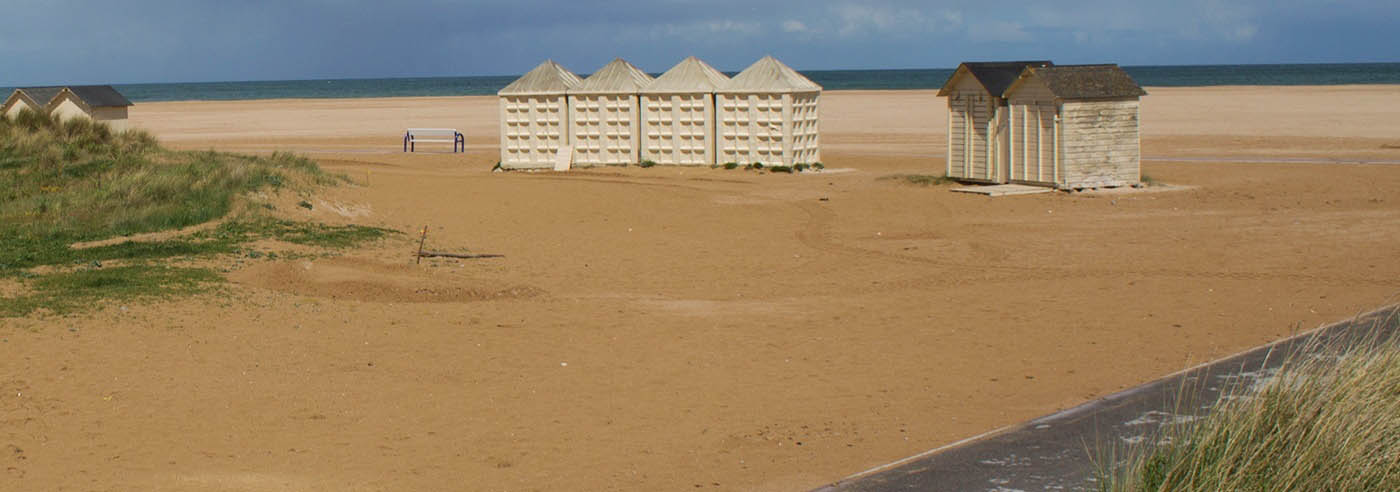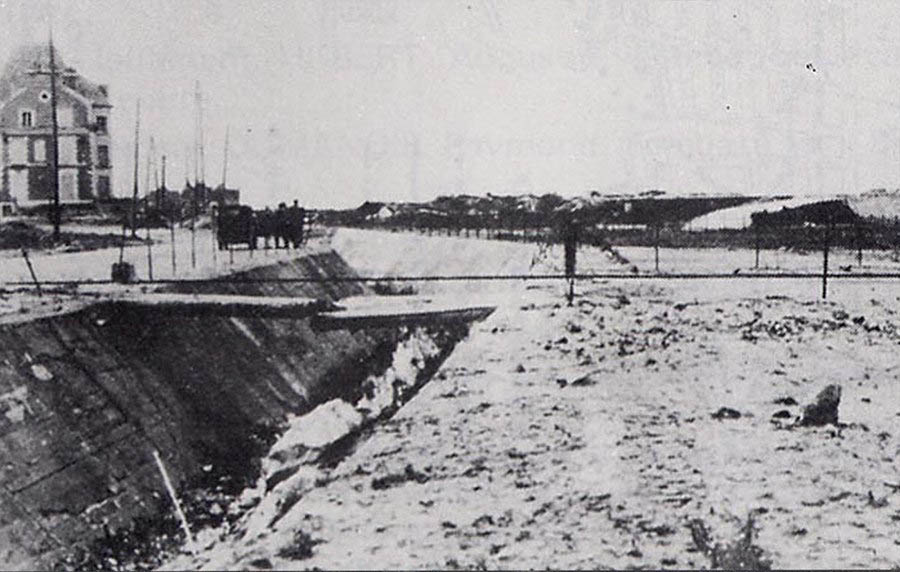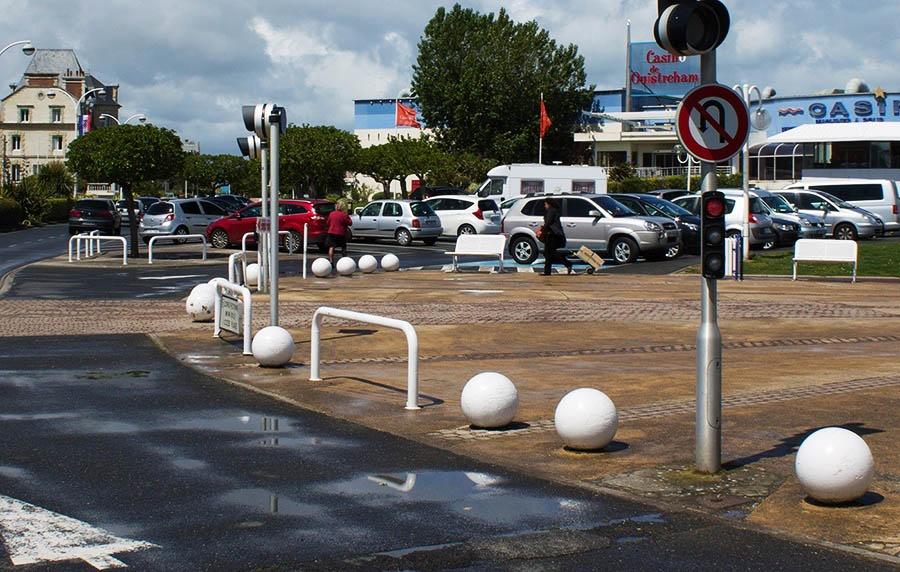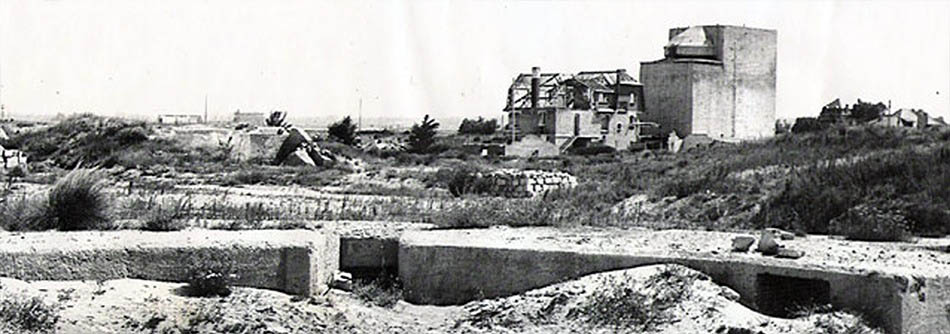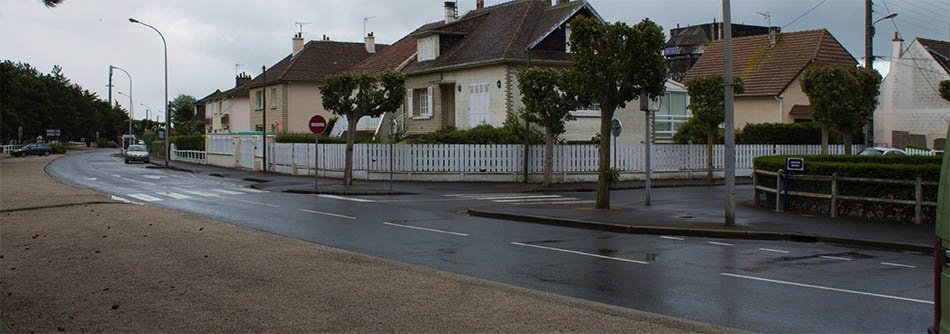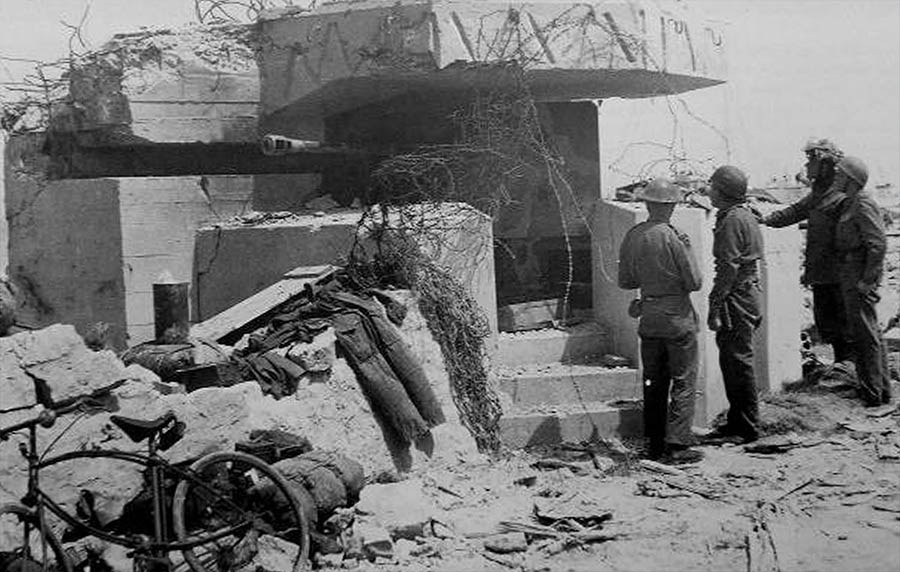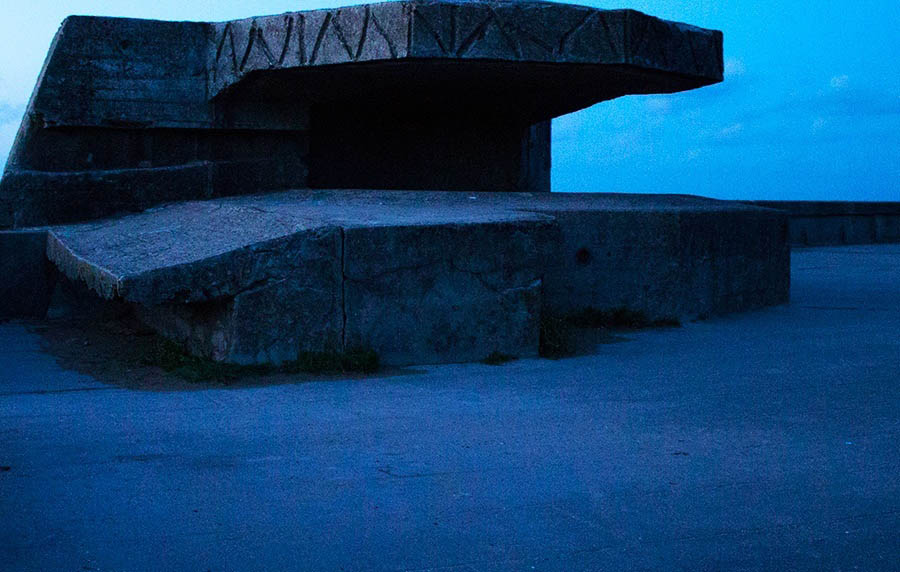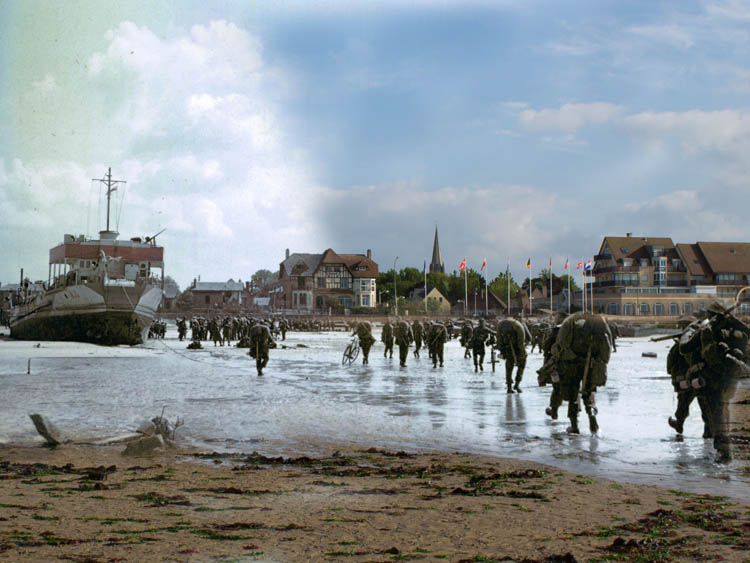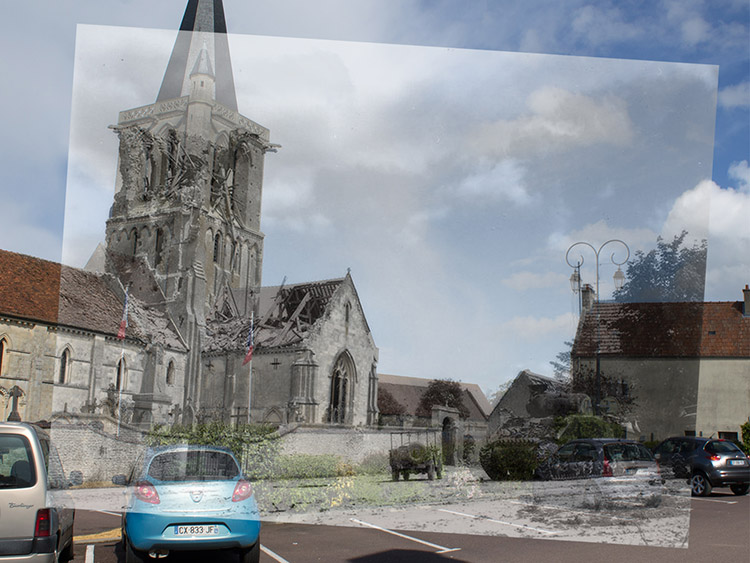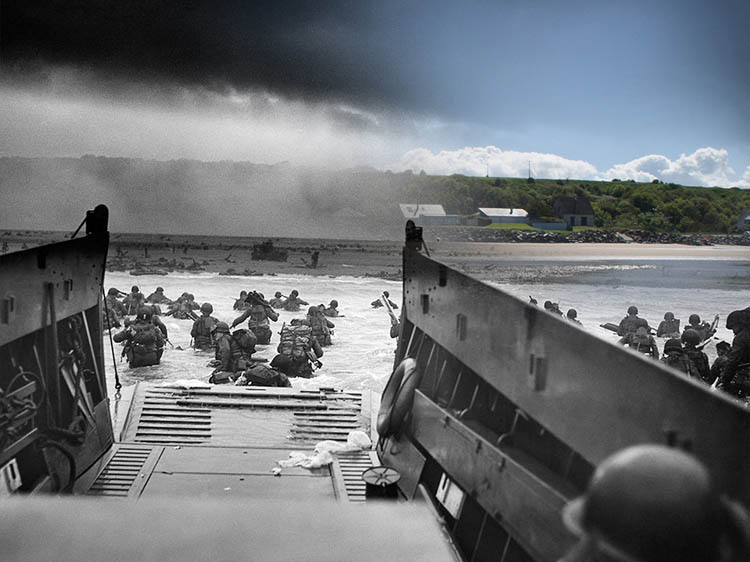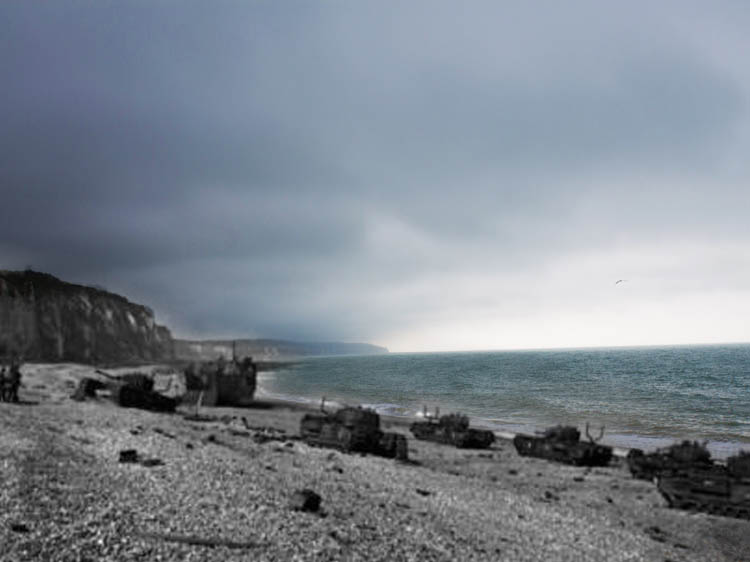Partner City
Sword Beach
Sword Beach to Caen
At dawn on June 6, 1944, three armies sailed into battle on the beaches of Normandy. The largest was British. Their task was to capture the two beaches on the Allies' eastern flank, code-named Gold and Sword, and push inland towards the city of Caen. Behind the beachhead gliderborne infantry and paratroopers from the 6th Airborne Division landed in the dark, securing key bridgeheads in an attempt to forestall the expected German counterattacks. On Gold Beach the landings went according to schedule, especially after a deadly German anti-tank bunker was neutralized by a well-placed shot directly into the embrasure. On Sword Beach the men of 4th Commando and the 3rd Division pushing inland encountered stiff resistance anchored on the sea-side port of Ouistreham. British and French commandos faced withering fire neutralizing the German strongpoints centered on the town's casino. Yet by the end of the day a beachhead had been established, and abortive counterattacks by the 21st Panzer Division had been seen off. After the drama of the first day's fighting the British could look forward to two more months of fierce combat in the Battle for Normandy, and they faced by far the greatest share of the Wehrmacht's elite divisions who sought to keep the Allies bottled up in their narrow beachhead. Though Caen was a D-Day objective, it would only fall after another six weeks of swirling combat between SS panzergrenadiers and British Tommies in the fields and villages in front of the city. Some historians argue these battles were the fiercest fought by the Western Allies in the whole war, with the British, Canadian and German units involved taking the most appalling casualties. The British army that landed on D-Day represented an army at its apogee, and as the heavy fighting in Normandy took its cruel toll Britain's role gradually became secondary to the growing American armies who would lead the breakout from Normandy and beyond.
Explore
Sword Beach
Then and Now Photos
Gliders
1944
The three gliders that landed within 50 yards of the Orne River Bridge and began the D-Day invasion.
The capture of the bridge that spanned the Caen Canal between Ouistreham and Caen was of paramount importance to preventing German armoured counterattacks towards Sword Beach. As such 181 men under the command of Major John Howard were to be landed by glider practically on top of the bridge at 12:16 on the morning of June 6. They were to be the first Allied troops to see combat in Operation Overlord.
This short, sharp engagement ended with the airborne troops capturing the bridge and holding it until relieved by troops landed on the beaches in the morning. It was famously immortalized in the movie The Longest Day.
Pegasus Bridge View
1944
A view of Pegasus Bridge along with the Cafe Gondree on the right, which proudly claims the honour of being the first house in France to be liberated by the Allies. As you can see the bridge has been replaced, though the original has been preserved at a museum nearby
Bren Gun Carrier
1944
Bren Gun Carriers driven up from Sword Beach have relieved the airborne troops and are crossing the bridge to take the fight inland.
Beach Defenses
1944
British troops landing at Gold and Sword Beach faced prepared German positions. Ant-tank gun bunkers, machine gun nests and mortar pits were organized into strongpoints along the length of the beaches. In some places the men storming ashore faced terrific German fire, but the timely arrival of armoured support, Hobart's 'Funnies', allowed the invaders to neutralize these positions and push quickly inland.
In the days after the invasion French civilians have turned out onto the beach to catch a glimpse of the massive Allied fleet anchored just offshore. Around them are the thick belts of obstacles that formed the first line of defense of the Atlantic Wall: stakes and obstacles to destroy landing craft, and barbed wire and tank traps to obstruct the advance.
The Casino
1944
The scene of the casino at Ouistreham in 1944, shortly after the fighting. You may remember the casino from the movie the Longest Day, where it was successfully assaulted by French commandos and British armour on the morning of June 6. In the movie the casino still stands, but in reality the Germans had razed the building and turned it into a sophisticated concrete defense complex which can be glimpsed on the right side of the old image. Today it is a casino once again, while the house on the left is the same as before.
Fire-Control Bunker
1944
This odd looking fire-control bunker in Ouistreham managed to evade detection by Allied reconnaissance and was bypassed by the first British troops to land on D-Day. A couple days later two Canadian soldiers blew off the doors with a charge and took the 50-strong garrison prisoner. Today a suburban neighbourhood has been built around the bunker while the building itself is now the Museum of the Atlantic Wall.

